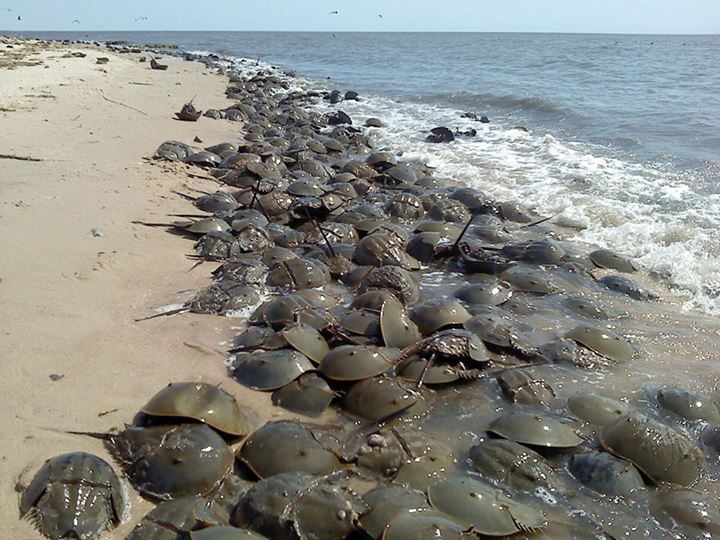Check out the power of fresh sand for attracting spawning horseshoe crabs…the results of two years of habitat restoration work on the Delaware Bay.
Below is the same beach on the same day along an unrestored section of the shoreline.
Once one of the best horseshoe crab spawning beaches on the Delaware Bay, Moores Beach was degraded by both Hurricane Sandy along with rubble placement by homeowners at this formerly inhabited area years ago.
Rubble removal and truckloads of fresh sand have improved the beach habitat dramatically and the horseshoe crabs wasted no time finding it, as you can see in the before an after image below (use the slider).

My job at this and the 5 other restored beaches on the Delaware Bay (Pierces, Cooks, Kimbles, and South Reeds) has been to examine the response of horseshoe crabs and shorebirds to the restoration.
Overall we have found that the crabs immediately began to spawn in the fresh sand brought in from local sand mines to replace what was lost during hurricane sandy. And the shorebirds, in turn, fed heartily. Based on previous horseshoe crab research the restoration team chose the optimal sand grain size to place on the beaches and engineered beach slopes that are optimal for crab spawning.
The next step in the evaluation of the restoration is to tally horseshoe crab egg density in the new sand and compare it to historically high quality beaches that were not adversely impacted by Sandy. We are also assessing egg development by tracking samples of eggs during the full incubation period to ensure that the eggs developed into horseshoe crab larvae. These studies are ongoing as I write, now in the middle of the second year of the project. Please see this report for a summary of last year’s results.
As we dig deeper into the results of this work, we can look for patterns across the restoration sites that may lead us to improved strategies and techniques for future horseshoe crab habitat restoration proects.
For more background on the project, its funders and the organizations tasked implementing the project see these videos fromone of the funders, NFWF and by Greener New Jersey Productions: